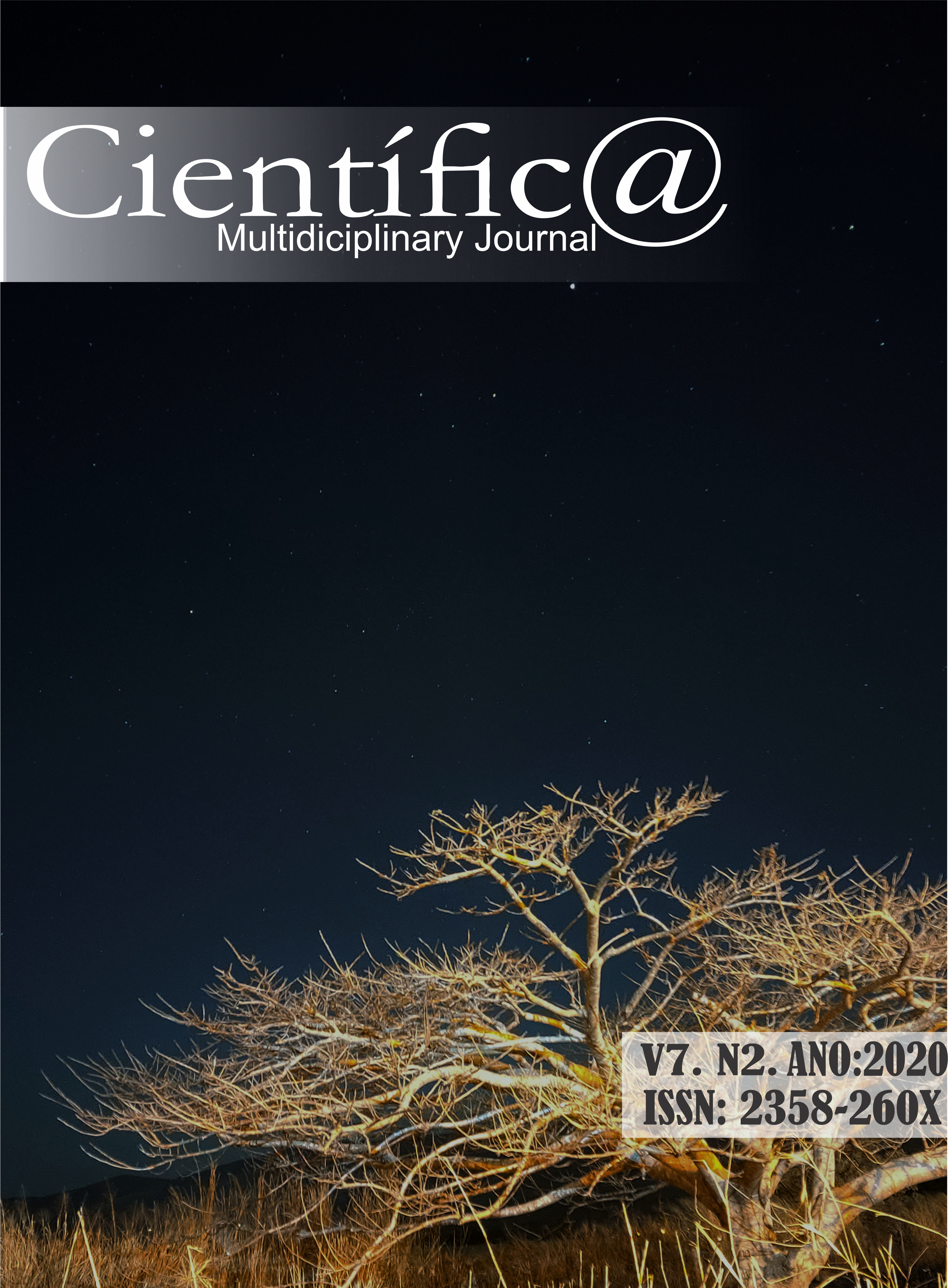IMPACTOS AMBIENTAIS REGISTRADOS EM NASCENTES NO MUNICÍPIO DE JARAGUÁ, GOIÁS NO ANO DE 2019
DOI:
https://doi.org/10.37951/2358-260X.2020v7i2.4551Resumo
Os cursos hídricos garantem água à população rural e urbana por meio das nascentes. O manejo inapropriado do solo provoca solos arenosos, com alta declividade, descobertos de vegetação e compactados, consequentemente impermeáveis, as erosões acarretam em córregos e rios assoreados diminuindo assim a quantidade de água potável. O presente trabalho visou diagnosticar os impactos ambientais em nascentes no município Jaraguá Goiás. No ano de 2019, por meio do projeto de extensão “Preservação do Meio Ambiente, com foco em economia de água, energia, preservação e recuperação de nascentes”, Foram realizados diagnósticos, com registros fotográficos e filmagens em seis nascentes, com apoio de acadêmicos voluntários do curso de Agronomia, Engenharia Ambiental e Sanitária, bolsistas do curso de Pedagogia e Ciências Contábeis, da Subsecretaria do Meio Ambiente e do professor proponente da ação. Os parâmetros macroscópicos avaliados foram: erosões nas nascentes e áreas de preservação permanentes, coloração, odor, lixo, materiais flutuantes, espumas e óleos, esgoto, vegetação, uso por animais, uso antrópico, proteção, identificação, residências e tipo de área de inserção. A classificação das nascentes por grau de preservação foi realizado por meio de notas, que indica os índices de preservação como nascentes preservadas, moderadamente preservadas e degradadas de acordo com a escala de notas, sendo que as nascentes que possuem índice de 20 a 32 pontos são consideradas preservadas, as que alcançaram uma pontuação de 33 a 46 pontos são nascentes moderadamente preservadas e as que pontuaram de 47 a 60 pontos são degradadas. Cada uma das seis nascentes visitadas pelo projeto de extensão no ano de 2019 apresentou aspectos distintos de degradação, porém com algumas características semelhantes. Neste contexto, percebe-se que a maioria das nascentes não possui vegetação nativa suficiente e/ou nenhuma. Em todos os diagnósticos foram constatada a presença de animais de grande porte no local, comprometendo a vida das nascentes. Entende-se a necessidade e urgência na continuidade de trabalhos nessa vertente envolvendo as demais esferas da sociedade.
Downloads
Publicado
Como Citar
Edição
Seção
Licença
Esta revista oferece acesso livre imediato ao seu conteúdo, seguindo o princípio de que disponibilizar gratuitamente o conhecimento científico ao público proporciona maior democratização mundial do conhecimento.
A partir da publicação realizada na revista os autores possuem copyright e direitos de publicação de seus artigos sem restrições.
A Revista Científic@ - Multidisciplinary Journal segue os preceitos legais da licença Creative Commons - Atribuição-NãoComercial 4.0 Internacional. 

